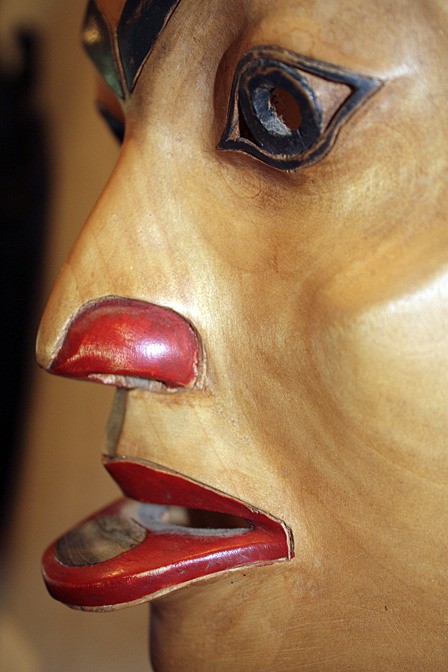If these masks could talk, they would tell tales of forgotten centuries in far away countries.
Within the walls of the Madrona Room are more than 70 masks from across the globe.
They are categorized geographically: New Guinea, Africa, Indonesia, Thailand, Mongolia, Pacific Northwest, Canada, Europe, Mexico, and Panama, as well as several works made by local artists.
Just outside the Madrona Room, in the Orcas Center lobby, hang David Densmore’s larger-than-life mask creations.
The work is part of the show “About Face,” which will be at Orcas Center through the end of the month.
“I think people in the community who haven’t seen the show might be amazed by the variety of masks made by different cultures and would truly enjoy seeing them,” said show organizer Marilee Holm.
During the reception on April 2, anthropology professor Bob Littlewood spoke about the cultural significance of masks, telling the audience that by wearing clothes, jewelry, make-up and other items of personal presentation, they were revealing a desired “self” while simultaneously obscuring an inner self.
“The wearing of the mask (or body adornment) is transformational, even to the point of enhancing one’s apparent power in a ritual or social situation,” he said. “The Hopi dancer becomes the god when the mask is put on. The overweight, middle-aged, tired man who looks back out of the mirror in the morning, puts on boots, uniform, leather belt with mace can, handcuffs, 9mm pistol, and steps out into the morning self-convinced of his social power by virtue of the mere act of masking.”



